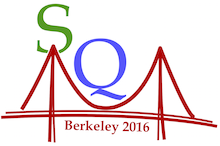Speaker
Description
We analyze hadrochemical freeze-out in central collisions of mass 200 nuclei, at AGS, SPS and LHC energies. Ideally, the hadronic multiplicities are the outcome of QCD hadronization, which creates them in Grand Canonical(GC) equilibrium of species essentially due to phase space dominance. The GC analysis performed in the Statistical Hadronization Model(SHM) thus ideally reveals points along the QCD phase boundary line, in the (T,mu(B)) plane which is common to Lattice QCD at finite baryochemical potential mu(B), and to the SHM. Within these assumptions one of the main goals common to QCD theory and nuclear collision experiments comes well within reach.
This picture requires some correction as it turns out that the model of an instantaneous, synchronous chemical freeze-out occuring at hadronization does not meet with reality in A+A collisions due to the large hadron/resonance density right after hadronization. Inelastic transmutations of species does in fact play no essential role owing to the "low" phase transition temperature, but baryon-antibaryon annihilation processes do persist throughout the final hadron/resonance expansion phase. We have quantified these effects employing the microscopic transport model UrQMD. A rather substantial proton-antiproton annihilation rate to pions is observed at all energies, explaining the much debated "non-thermal proton to pion ratio" first observed at the LHC.
After entering the yield modifications predicted by UrQMD into the SHM analysis we recover the "true" positions of the hadronization points in the (T,mu(B)) plane. A very low curvature of the QCD transition line is indicated up to about mu(B)=400MeV
in agreement with lattice calculations, followed by a sudden drop-off at the AGS.
Further data at lower energy are urgently expected from NA61,FAIR and NICA.
| On behalf of collaboration: | [Other] |
|---|
